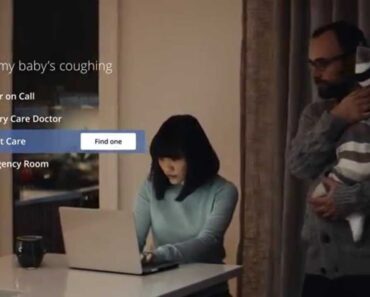
It’s no more guesswork.
Are you tired of the constant guessing game of trying to understand your baby’s needs? Imagine communicating with your little one before they can even speak! Then, introduce baby sign language – a powerful tool that can bridge the gap between your baby’s thoughts and your understanding. With it, your child can express their wants and needs, reducing frustration and tantrums. Not only that, but research has shown that babies who learn sign language have enhanced cognitive development and a more extensive vocabulary.
Keep reading as we explore baby sign language’s benefits, tips on getting started, and the potential drawbacks to consider. So, let’s dive in and discover the wonders of baby sign language.
What Is Baby Sign Language?
Baby sign language is a method of communication using gestures and signs to help babies and young children express their needs and wants before they can speak. The signs used in baby sign language are typically based on American Sign Language (ASL). This method can help reduce frustration, improve communication between parents and babies, and help babies develop their language skills at an early stage. Baby sign language basics can be particularly beneficial for children with hearing issues as a path for building communication skills (1).
Baby sign language is not the same as ASL but is a simplified version designed to be easily understood by infants and young children. The signs and gestures used in baby sign language are typically based on ASL but are modified to be more appropriate for young children who are still developing their language skills. ASL is a full-fledged language with its grammar, syntax, and culture, while baby sign language is a form of pre-verbal communication (2). While baby sign language is derived from ASL, there are no grammar rules involved in it.
When Should You Start Teaching Your Baby Sign Language?
It is recommended to teach baby sign language between six and 12 months, as babies can understand and communicate simple gestures around this age. However, it is never too early or late to teach your baby sign language, and some experts suggest starting as early as four months old. Teaching baby sign language can begin as early as six months old. The time to start teaching a baby sign language depends on the first signs used by an infant.
Most parents worry about when to start teaching their child sign language. However, it is essential to remember that every child develops at their own pace, so it is best to begin when the child shows interest and readiness to communicate.
Pediatrician Howard Reinstein of Encino, California, and spokesperson for the American Academy of Pediatrics, said, “Most babies have the physical dexterity and cognitive ability to learn some form of sign language at about eight months” (1). So, while your baby will eventually start connecting with the things around them, they will learn sign language within nine months of age.
Did You Know?
Like spoken languages, every country has its version of sign language or the same sign language in a different dialect.
How To Teach A Baby Sign Language?
Start with the simpler words that are used often. However, teaching sign language to your baby isn’t a complicated process. You require patience and consistent efforts to teach the baby sign language. Here are some practical tips you need to follow:
- Start with basic signs: Begin with a few basic signs that are related to your baby’s daily routine, such as “milk,” “eat,” “more,” and “finished.”
- Use clear and consistent gestures: Ensure they can see your hands and face while signing to your baby.
- Use of repetition: The primary factor to remember while teaching baby sign language is to use the same sign or symbol repeatedly and consistently to acquaint your baby with it. Try to sit with your baby every day at a particular time. For example, at mealtime, you can teach signs, such as “eat”, “drink” and “more” for better understanding.
- Speak the words: Speak the word aloud so that your baby can associate with it. For example, while changing your baby’s diaper, speak the word “diaper” to become interactive.
- Be patient: If your baby is not picking up signs quickly, do not panic. Be patient and add fun to the process by encouraging your baby by hugging and kissing.
- Be attentive: Pay attention to your baby while they are trying to communicate with you through sign language. You might miss how your baby is progressing with sign language if you get distracted.
- Encourage your baby to sign back: When your baby starts to mimic your signs, encourage them to sign back to you.
- Keep it simple: Start with a limited number of signs and gradually add more as your baby gains confidence and is skilled at using them.
- Consistency is key: Keep up the practice regularly and consistently, eventually it will become a natural part of your baby’s communication.
- Don’t give up: Signing with your baby can be fun and rewarding, but it may take some time for your baby to start using signs. Don’t give up, and keep signing with your baby.
What Are The 25 Most Common Baby Signs?
The key is to start with signs that are relevant and useful to your baby’s daily routine and environment. Read on to learn the most common baby signs.
1. Drink
To teach “drink” in baby sign language, make a “C” shape with your hand as if you are holding a cup and move it to your mouth and pretend to drink from it.
2. Hungry
You can teach “hungry” sign to your baby by making a “C” shape with your hand around your neck and then gently moving your hand from the neck to the stomach.
3. Food/eat
The baby’s sign language for food/ eat is different from the sign of hunger. So, be careful to notice the difference in your baby. Eating in baby sign language can be known when you tap the tips of your fingers as if you are eating with the palm facing down and the thumb touching your fingers.
4. Milk
Start communicating the word “milk” in sign language by making two fists, extending your fingers, and bringing them back to your fists.
5. Water
The sign for “water” is done by extending three middle fingers by pointing them up and your thumb and little finger pointing down while tapping your index finger to the chin.
6. More
How will you know if your little one needs some extra shots? Teach your baby to express “more” by pinching your fingers, and thumbs together on both hands by making “O” shapes and then tapping your fingertips.
7. All Done
Teach your baby the “all done” sign. Put your hands up, face your palm towards yourself and turn them until your palm faces out. Another way is to simply open and close your hand in a closing and opening motion.
8. Sleep
For this, hold your hand over your forehead and draw your hand down to your face. Remember that your fingers and thumb should touch your chin.
9. Play
To show “play” through sign language, clench your fingers to your palms, extending your thumb and little finger. Then, facing your palms towards you, twist your wrists back and forth.
10. Hurt
Teach them the hurt sign by clenching both hands into fists and extending your index fingers, and touching them together.
11. Help
For this sign, make a fist by extending your thumb and placing it over the other flat hand and then moving both hands together.
12. Please
Teach the baby sign language for please by extending your fingers and rubbing your palm on your chest.
13. Sorry
The baby sign language for sorry is made by making your fingers into a fist and rubbing your fist in a circle over your chest.
14. Thank You
Thank you in sign language for babies includes straightening your thumb and fingers, bringing them to your chin, and pulling them away.
15. Love
To teach baby sign language “love”, extend your thumb, index and little fingers upwards with middle and ring fingers pointing downwards, and hold your hand with your palm facing outwards.
16. Book
To show “book” in sign language, hold your palms together with your thumbs facing upwards by keeping your little fingers open as if you are reading a book.
17. Bath
Baby sign language for bathing can be shown by making two fists and moving them up and down your chest.
Quick Fact
In American Sign Language (ASL), the alphabet can be demonstrated using one hand, while in British and German Sign Languages, it requires two hands.
18. Poop
Teach them the baby sign language for poop by clenching both your hands and making them into fists. Place them on top of one another with the thumb of the upper hand placed inside the upper fist and pull your bottom hand down from the upper hand by leaving your thumb extended.
19. Share
To teach “share” in sign language, extend your hand flat with your thumb pointing upwards. Run the other hand back and forth along the top of your extended fingers.
20. Sad
Place both hands in front of your face with palms facing inwards. Bring both your hands down to your face and tilt your head slightly.
21. Mom
Teach the baby sign language for “mom” by spreading your fingers apart with little fingers facing front and tapping your thumb to your chin.
22. Dad
Spread your fingers apart with the little finger facing forward and tap your thumb to your forehead to show “dad” in sign language.
23. Towel
To sign “towel”, raise your hands to shoulder height by closing your fists. Then move your arms back and forth as if you are drying your back with a towel.
24. Boy
The “boy” sign language can be shown by putting your fingers together and placing your hand in front of your forehead.
25. Sick
For teaching the “sick” sign language, use both the hands and place the middle finger on your forehead.
Did You Know?
In American Sign Language (ASL), the location of a sign can indicate the gender of the person or object being referred to. For example, signs for female-related words, such as “wife” or “daughter,” are typically signed near the jawline, while male-related words, such as “father” or “boy,” are shown near the forehead.
What Are The Benefits Of Teaching Sign Language To A Baby?
Teaching sign language to a baby can have several benefits. Some of these include:
- Improved communication: Sign language allows babies to communicate their needs and wants before they can speak, which can reduce frustration and tantrums.
- Enhanced cognitive development: Sign language requires babies to use both sides of their brain, which can help overall cognitive development.
- Increased vocabulary: Babies who learn sign language tend to develop a larger vocabulary than those who don’t.
- Stronger bond with parents: Teaching sign language to a baby can create a stronger bond between the child and the parent, allowing for more effective communication and understanding.
- Early exposure to language: Sign language can be a great way to expose babies to language at an early age, which can help with language development.
- Helps develop fine motor skills: Teaching signs to babies requires them to use their hands, which can help with developing fine motor skills.
Acredolo and Goodwyn conducted a study in 1988 to explore how frequently infants use signs and gestures to communicate and how purposeful the gestures were in language development. The study was conducted with 103 infants by dividing them into three groups. Results showed that infants who were included in the sign group showed positive outcomes in language development tests (3).
As published in the 2021 edition of the journal ‘Cognition’, sign language is said to promote object categorization in young-hearing infants (4). In another study by Holmes and Holmes in 1980, a hearing child was brought along with his parents, who used sign and spoken language to communicate from 26 weeks to 17 months. It was found that the child produced the first ten words at least three months earlier than a normal developing child, and by 17 months, he could produce more than 112 words. Researchers hypothesized the result of early acquisition of expressive and receptive language to teaching sign language (5).
What Are The Drawbacks Of Teaching Baby Sign Language?
While teaching baby sign language can have many benefits, there are also some potential drawbacks to consider:
- Potential for confusion: If a baby is exposed to multiple languages, including sign language, there may be confusion about which language to use in certain situations. Babies might face difficulties in learning sign language which can be a reason for frustration for both the parent and the baby (6).
- Possibility of delay in spoken language development: Some experts suggest that teaching sign language to babies may delay the development of spoken language, although this is still a topic of debate among researchers.
- Not all caregivers are fluent in sign language: If the baby’s other caregivers are not fluent in sign language, they may not be able to communicate effectively with the child.
It’s important to consider all these factors before teaching a baby sign language. Also, note that teaching sign language is not a substitute for spoken language but an additional tool for communication that you can use alongside spoken language.
1. Can baby sign language improve IQ?
Research on the relationship between baby sign language and IQ is still ongoing, and the results have been mixed. Some studies have suggested that teaching sign language to babies can improve cognitive development and lead to a higher IQ later in life. It has been seen that babies who use sign language have healthier brains with a high IQ level than babies without sign language (7).
2. Will my child turn smarter by learning sign language?
Learning sign language can have cognitive benefits for a child, such as improved communication and enhanced vocabulary, but it’s not clear whether it will make them smarter. According to research, babies who learned to sign at 12 months had a higher vocabulary than children who did not (8).
Teaching baby sign language can have many benefits for babies and parents. It allows babies to communicate their needs and wants before they can speak, which can reduce frustration and tantrums. It also enhances cognitive development, increases vocabulary, and creates a stronger bond between the parent and the child. Baby sign language charts can be a helpful tool for parents and caregivers, providing a clear and easy-to-understand visual representation of the signs. However, it’s important to note that not all babies are interested in learning sign language, and some may not pick it up as quickly as others. And the signs used in baby sign language may vary depending on the country and the culture.
Key Pointers
- Sign language is an effective tool for communication, which can be taught to babies from six to nine months of age.
- You need to be patient, and consistent, and focus on repetition of the words for teaching sign language to babies.
- Sign language for babies helps reduce frustration, enhance verbal and social skills, reduce communication gaps and stress among babies.


































